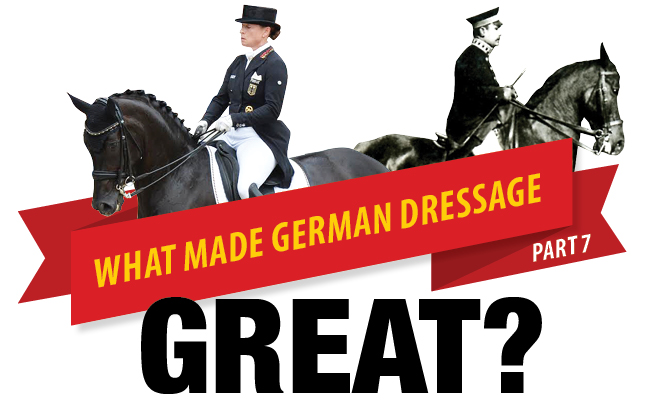
Missed the earlier episodes? Here they are: Part 1 – Part 2 – Part 3 – Part 4–Part 5– Part 6
Christopher Hector continues his series, and goes to visit the hub of German training, the DOKR at Warendorf… Thomas Hartwig contributes a fascinating portrait of the great Paul Stecken.
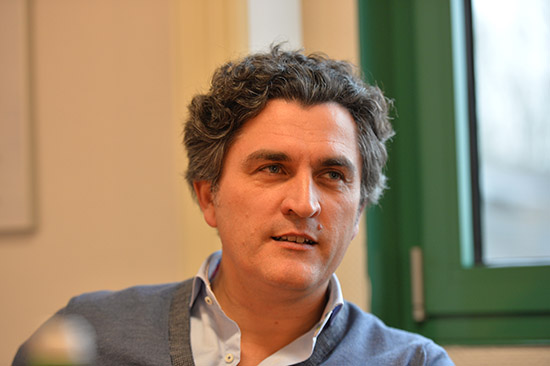
Sönke Lauterbach – the administrator
When I first started travelling to Germany, thirty years ago, equestrian officials looked just that – official. Dark suits and bowler hats were much favored. Times certainly have changed, Sönke Lauterbach, who was appointed German FN Secretary-General in the beginning of 2009, looks more like the lead guitarist in a tasteful rock band, and I can’t see him donning a bowler.
We sat down in his office in Warendorf to discuss how the organization he heads, fosters dressage:
“The German Federation started in 1905, at the very beginning it was an association of breeders who understood that they would need a market to sell their horses. How do we do that? We create horse shows, competitions to attract people to horse sports. That was the very beginning.”
“It wasn’t the Federation as it is today, there was no FEI then, there was nothing, it was just a club of individuals interested in horse breeding. Then in 1913 the Crown Prince – we were still a monarchy then – decided, we want to be good at the next Olympic Games, and he created the DOKR, the Olympic Committee for Equestrian Sports, because he wanted to prepare the Army riders better – up until then they had under-performed in big events, and we were supposed to have the Olympic Games in Germany in 1916, which didn’t happen because we were very bad people by then.”
“So we had a second organization, the DOKR, and over the time, regional associations were created, especially after the Second World War when Germany started to become a proper country again. In the late 1940’s, early 50’s, equestrian sports really started to grow.”
“Ultimately in 1968, everyone came together and all these different associations decided that we need to be one big family, and they created the German Federation as it is today.”
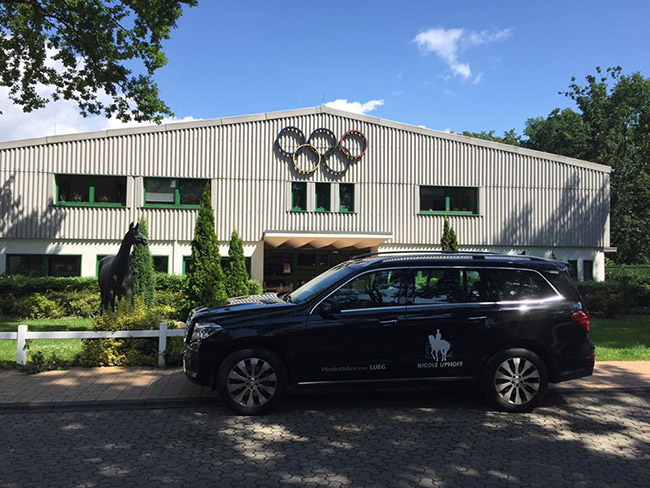
How does the structure work?
“We have the sports sector or wing, with 17 regional associations, and in these regional associations there are 7,700 riding clubs and in these clubs, there are 700,000 members. Ultimately they are our members, but not in a legal sense, only the associations are federation members. We have a group of direct members as well. We don’t actually help you learn to ride, but you get a member’s magazine and we go with you to the Olympic Games. Anyone – even you – can become a personal member of the Federation. For many years Ruth Klimke was the vice-president of the German Federation and she was the boss of this sector of private members. What we offer them a lot is educational assistance, so we have seminars, clinics, where they can go and see Ingrid (Klimke) giving a lesson, but we are not going into competition with the local riding clubs – you can only get a competition license when you are a member of a local riding club, and you need that to compete.”
“The third branch is a breeding sector, and I think that’s what makes us unique in the equine world, because we have sport and breeding organizations under one umbrella. There are twenty five breeding associations who have members with 120 different breeds, from the smallest pony, to the biggest cold blood horses. It is this umbrella of the three sectors that makes our system, our administration, our training opportunities and the competitive opportunities, so good – we have a very close network of possibilities where people can learn to ride, and then where they can compete, and develop and train and educate themselves.”
How is this structure financed?
“Each of the rungs of the different levels are funding themselves. The local riding club is funded by the members, they pay, say €100 per year, on top of that they pay for lessons – so the trainer gets paid – and their stabling, and so on. There is some funding from the town or the region where they are, but that is marginal. Then there are the regional associations, they get some funding from membership fees and they get some funding from courses they offer, for the education of trainers for example. There is a license fee – we have a system of badges where you can sit an exam as a rider, and then you earn the badge number 10 or badge number 5, and every time you do this, the regional association gets a little bit of money. Then the regional associations also get some state funding.”
“Now we come to us, and here I know the figures better. We have an annual budget of 24, 25 million euros. Ten percent is membership fees, not more. Fifty plus percent is income from services we offer, horse registration, rider registration, show registration, we also sell some things – we have our own publishing house and we get part of the profit, because it belongs to us. Then we do have some state funding, but that is only 10-15%, that is from the Federal Government, which is the biggest sponsor of top sport – all the sports, not just equestrian.”

This is not channeled through your Olympic committee?
“It is, we work with the Olympic committee to define the needs, and they define all the needs of the 95 member associations, and they discuss with the Minister of Sports, and together they decide how much we get. It’s a bit of a competition with athletics or swimming, but usually it works quite well for us because we are successful. Usually it’s around ten to fifteen percent of our annual budget, it’s a lot of money, but we are happy that it is a comparatively small percentage of the total, because if one day, the state decided no more top sport funding, many of my colleagues in other sports, they would really be bankrupt because they have 80% of their budget from Federal funding. Obviously it would hurt us, but we could survive and somehow re-allocate our funds, and be able to survive in the first place and to have top sport as well.”
Do you have a tension in your membership between the grassroots, happy weekend competitor, and the elite riders, with the others complaining that all their funds are spent on the elite?
“Of course we have this, and it is getting a little bit more, I would say. I can’t remember that there were such discussions 20 years ago, everyone was still so focused on top sport and championships. It was taken for granted, this is what we are doing. Now it’s slightly changing and we need to argue well, and convince our members that it is still the right approach. At the same time we need to look for new sources of funding – we need to make it clear to them, look guys we don’t rely on your membership fees to fund the Olympic Games. We get this money from other sources and if we did not go well in top sport, we would not get that money. So in a way, you are losing less as a normal member than 20, 30 years ago. They really don’t have to pay for the top sport. Definitely not for the Olympics and Para Olympics, because they are 100% funded by the Sports Minister. We ourselves have to fund the other disciplines.”
“For example, for the WEG in Tryon next year, we will have a budget of nearly €1.5 million, about half of it will be funded by the Sports Minister for the Olympic and Para Olympic disciplines, we ‘only’ have to take care of the rest. Driving is a big portion because there are so many horses there…”
“We manage to convince our members that it is good, because four years ago we established a foundation to support equestrian top sport, and there is good money coming in through this foundation. There are other foundations like the Liselot Schindling Foundation, they are a terrific support for the whole dressage system. Josef Neckermann created a foundation, for the whole sport, for all the athletes in Germany, all the sports – there is direct support for athletes, and he was the father of this.”
the story continues below the advertisement
“One thing I would like to mention, on one hand there is more debate or pressure – do we really need to support top sport all the time? And on the other hand, we as an organization are moving towards the recreational side as well. It is not that we are turning away from top sport, but we started to understand, some 10/20 years ago, that actually the vast majority of people are recreational riders, but for many years, we left them alone, and we didn’t care for them enough. That is why these people said, come on, you are only a top sport organization, and I have no interest in that – they were two different worlds. We are changing this, we are much better than 30 years ago, although there is still room for improvement.”
Do you have the same problem that many other federations experience, that their riders are vulnerable to losing their top horses – either the money is too good to refuse, or the owner sells the horse…
“It absolutely happens. I think if we look at the situation of jumping at the moment, it is obvious that we are suffering from this as well. We have top riders, some of the best in the whole world, yet at the moment the best-ranked German jumper in the world is 19th (this was in December 2017, by March 2018, the best positioned German rider was 15th). We could never imagine that this situation would happen to us, but we have to face the fact that we are losing horses, successful horses that are sold, or top young horses that are sold and don’t get into the German system. So we are in one boat with our colleagues from The Netherlands and France, Great Britain, where-ever, but that’s the way it goes, and I think it is also important for the sport to survive.”
“We are asked, aren’t you unhappy that the Brits won the gold medal some years ago in dressage? At that moment we weren’t happy, but we knew this diversity is necessary for the sport to survive. If it was only Germany, Holland and the US with a chance to win every time, then what’s the point in going to a championship as a rider or a spectator, it’s boring. We wouldn’t survive if we didn’t have more countries coming into the game, buying horses from us, or Belgium, or where-ever, buying our trainers or borrowing our trainers, paying our trainers, getting our system and getting better through this.”
the story continues below the advertisement
The first person who said this to me, was one of your predecessors, Dietmar Specht, when he was Secretary-General of the German FN in 1984 – he said we must get countries like Australia to the Olympics or we will lose dressage as an Olympic discipline. He arranged for our rider to qualify for Los Angeles, and but for him, we would never have had an Olympic dressage team…
“And without him and you, we wouldn’t have an Olympic dressage team now, it would be gone. So it’s not good to lose those horses, that knowledge, but in a way it is.”
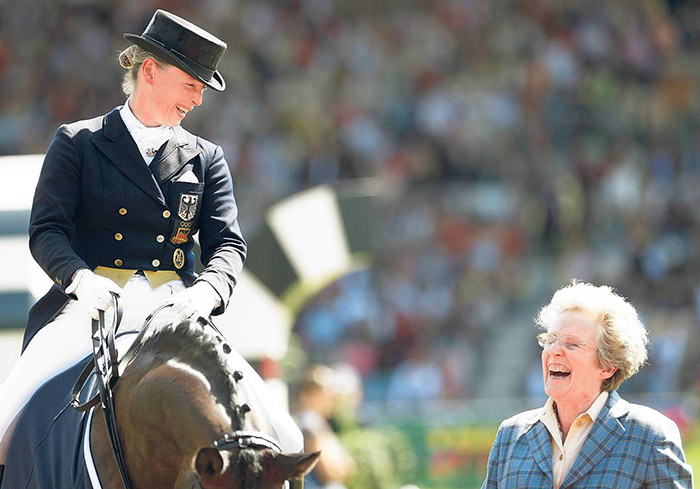
Do you actively try to keep horses – I mean, how many can Mrs Winter-Schulze buy?
“Not enough,” I should have mentioned that a laugh is never far away when you are talking with Sönke. “She is a tremendous supporter of our sport, but of course she can’t save the world on her own. We have different approaches on how to tackle this situation. We do buy horses. The DOKR owns, or co-owns, around 30 horses at the moment. We don’t buy them when they are produced and already worth three million, we can’t afford that, so we have to do it at an earlier stage. We buy some prospect horses, our trainers identify them and say, this could be a championship horse together with that rider – we pair them and we go for it.”
Doesn’t that cause enormous fights?
“No.”
Germans are much more disciplined than the rest of the world…
“There’s always someone who might say, ‘I would be better on that horse.’ But we have good people who make the decisions, and they have good arguments on their side, so there is not much debate – and we don’t give the horse to someone who lives far away in Kiel or Munich, normally they have to be here in Warendorf with the horse. Based here and willing to work with our national trainers on a daily basis, under our supervision to make sure they develop properly. You shouldn’t get the impression now that we are buying so many horses, as I say, at the moment, it is around 30 that we own or co-own, because that’s the next thing, we have the possibility sometimes to buy a certain percentage of a horse. Michael Jung and Sam, that’s the most famous example at the moment. After Kentucky, the owner wanted to sell the horse, and along with some others, we bought a certain percentage of the horse, which makes sure it can’t be sold without our consent. It is secured, even though we didn’t have to pay the full amount.”
“Sometimes we don’t buy a promising horse, but we make an arrangement with the owner – this looks like it might be a championship horse, has the potential – let’s do it like this: it stays your horse, we take it, we give it to this rider. The rider is supported and trained by our trainers, so the horse benefits as well, it is getting more valuable for you as an owner. Maybe sometimes we even pay some of the costs of the maintenance of the horse, for tack and farriery, and the vet, and I don’t know what. So we have different models of assistance.”
How many elite riders come through the DOKR system? In a year, roughly…
“We have around 90 clinics every year for squads. They have a clinic early in the year, and then in the Easter holidays, and then there is a clinic right before the championship, and in autumn we have the first clinics to select up and coming squad members for the next year. It’s about four or five thousand sessions a year – but one person might be here five times, so this one counts as five. We have a dressage seminar for our Olympic squad every year in March.”
more follows
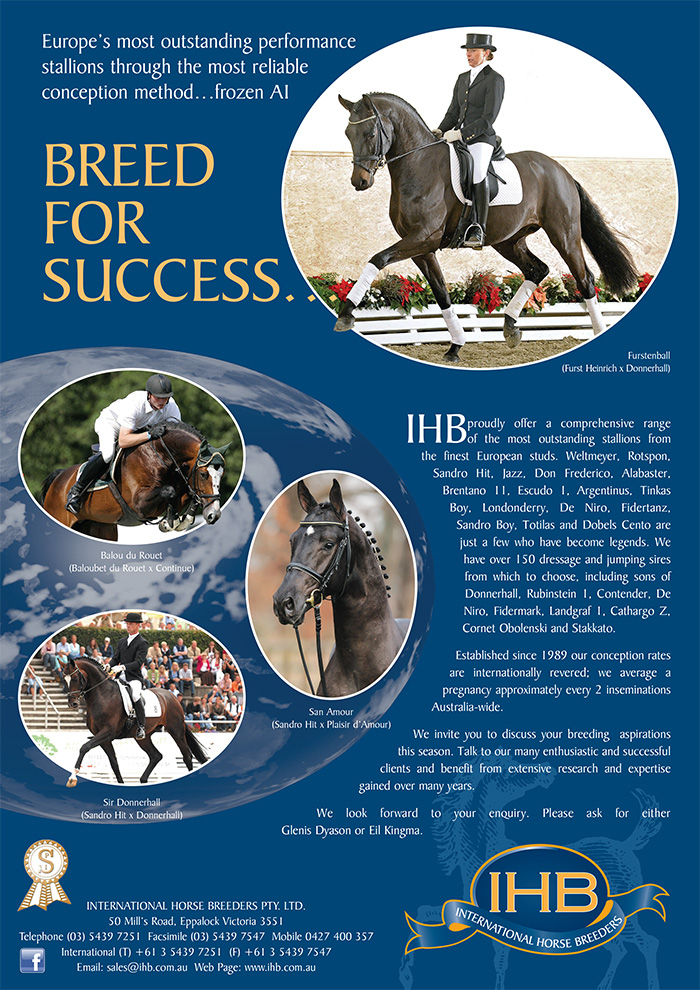
Why do you think German dressage became such a dominant force in world dressage? Okay the Brits won one, but 13 out of the last 20 gold medals were won by you guys…
“And we want it to stay that way! It’s three points. Number one is that we have been breeding the best horses. There is competition nowadays, but we’ve always bred very good horses, that’s number one. And a lot of horses, if you have forty, fifty thousand foals a year, there is a broad base on which to select some that will go to the top.”
“Two, we have a very very good education system, which has the right approach to training horse and rider, and bringing them up from the grass-roots level to the top.”
“And then we have a high density of horse shows, which gives them the mileage and experience they need, again from the grass-roots level, three and four-years-old, with a very clear system that has the right demands at all levels of competition. So we don’t ask a four-year-old to piaffe or passage – and that brings them up to the top. These three things are our strength.”
Thinking about the breeding part of it, breed society administrators like to see themselves as wise and forward thinking and guiding the future path, but my own impression, when I came here in the 80’s was that the German administrators were still talking about the all-round horse, and scoffing at the Dutch for having lines of dressage specialists. I get the feeling that it was the buyers who provoked the emergence of the dressage specialist horses here, rather than the smart guys who were supposed to be calling the shots…
“I tend to agree with you. I have to be careful, because then I really was still at school, but I think you are right, and I think that is normal because it is always the customer buying a car or a horse, it is the customer who tells the producer what he wants.”
“Our philosophy always was the all-round horse, it came from the military where they needed an all-rounder, or the farmer’s horse that was out in the fields working during the day, and then at the weekend, they could use it for leisure or competitive riding. So we always had this all-rounder who also could serve as a school horse for some more sophisticated riding, at the same time. Okay, this has changed and we know now that Holstein is known for jumping horses, and not so much for producing brilliant dressage horses, and other areas are known for dressage. So we have this specialization today, not everybody is happy about it. There is an ongoing debate among the breeding associations, and the sporting associations as well – what are the horses we need? We have fantastic horses at the top, but we have a lack of those grass-roots horses and ponies, more importantly ponies, we don’t have enough ponies to get kids to start to ride. Because so many breeders and associations were focusing on I want the Olympic Champion. I understand that on a personal level, but that is a challenge we are having now, how can we continue if we don’t have beginner riders? In 20 years we don’t have Olympic riders any more.”
Another area of concern if you are looking to Olympic success is the emergence of the Young Dressage Horse, as a breeding goal for some breeders, and we now have two FN breeding values, one for the young horse class and one for open competition…
“I’m not sure if this is the case, I’d be disappointed if it was, because that would be a very short thinking breeder who had this approach only. Young horse classes are a step to the next level. Yes, not every horse is able to make the step to Prix St Georges or Grand Prix classes, that’s true, but still our philosophy is that dressage classes for five and six-year-old horses, is only a step in between. That is why we are so fond of our Bundeschampionate. We know that every Bundeschampion does not make it to the top, but still it’s not our ultimate goal to just produce a Bundeschampion, and that’s it – definitely not.”
But the breeders are more and more using stallions that never got past five and six-year-old classes and if you look at any championship, the top horses are by stallions who were top in the sport. Now we are getting less mares going to those Grand Prix stallions, and more to fashionable sires who only competed in the Bundeschampionate…
“It’s a fact, they start breeding with the stallions when they are three, four, five-years-old, but it is a free market, the mare owners can do whatever they want to do.”
Looking to the future, to Tryon, to Tokyo, is your dressage team just going to go from strength to strength?
“We know it is going in waves. A few years ago, we were not on the top, we were a little bit weaker. It was a change of generation, which is fine, we were always convinced this is just a phase, and we will get up there again. Having a silver medal is still fantastic, don’t get me wrong – and now we have a fantastic group of riders with amazing horses, not all of them old, some ten, eleven, that’s great, so for the short term, Tryon, hopefully knock on wood, Tokyo, I’m very confident. We all back Monica (Theodorescu) and her team, watching out for horses and riders every day, that’s their work. 365, make that 364 days a year, because they know we have to think not of Tokyo, already we have to think of Paris and then Los Angeles. That’s what we are working on with our Olympic committee, the prospects for Paris, that’s the deal.”
And is there a secret project to clone Isabell Werth?
“If it was there, I couldn’t tell you.”
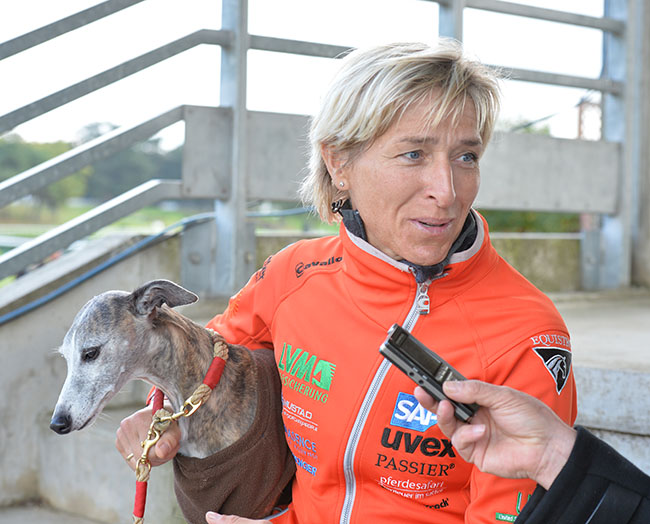
The riders: Ingrid Klimke
Ingrid in so many ways personifies everything that is good about the German system. Like her father Dr Reiner Klimke before her, she is an all-round rider, a star in eventing and in dressage, and she is a shining light in defence of the classical principles of dressage.
Why is dressage in Germany so strong?
“In my opinion, it comes from the history. We have had the cavalry schools where the training scale and the classical rules, were developed. We in Germany are very precise, and we have had great old trainers and masters, who influenced the classical way of riding. It is typically German that you really work hard and be very precise, and that is something you really need to be in dressage.”
“Step by step you work, regularly, in a long term process to build up a horse, and after six years, hopefully he will be a championship horse.”
For you was the influence, aside from your father, Paul Stecken?
“Definitely Paul Stecken because he came from the cavalry school and he knew well the H. Dv. 12, the German Cavalry manual on the training of horse and rider of 1912. After my father died in 1999, he was the one who was very clear in how to follow these rules.”
Do you think this tradition will live on, through you and younger trainers…
“I hope so, because it would be a shame if we don’t follow these footprints. Sometimes I think we miss some of the old ones, but if you look back, especially the last few years, you see there are wonderful young riders and young horses coming, so I don’t think we have to worry too much about German dressage.”
“I think now we have really wonderful combinations, wonderful horses showing lots of harmony, so I think we have to look for the classical way, so we have horses going in a free frame, active from behind, over the back, but nice and up in front, so they can really show in the tests.”
Once again I turn to my friend Thomas Hartwig to learn more about a man who personified the German Classical tradition, Paul Stecken…
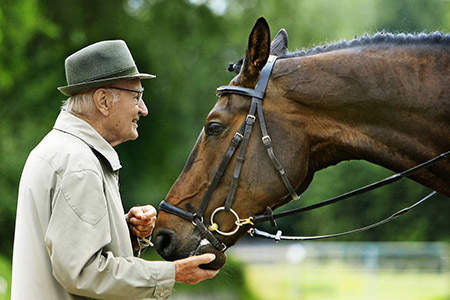
Richtig reiten reicht – Riding right is enough
Foreign visitors to horse sport activities in Germany are often surprised about the high level of participation in basic horse sport. Around 100,000 of the nearly 700,000 members of the National Equestrian Federation of Germany are competition riders at the 3,600 horse shows, with 70,000 competitions and more than 1,500,000 starts a year. One reason for these great numbers is the system of schooling and education of the professional and the amateur trainers and instructors in Germany. One of the great characters in this unique in the world system, was Paul Stecken who died on September 15th 2016 in the age of 100 years. In his time as head of the Westphalian Riding and Driving school in the town Münster he produced 1,917 professional and amateur trainers and 108 apprentices in this profession. Additionally he formed the legendary dressage and eventing rider Dr Reiner Klimke, his daughter Ingrid Klimke and many other top riders.
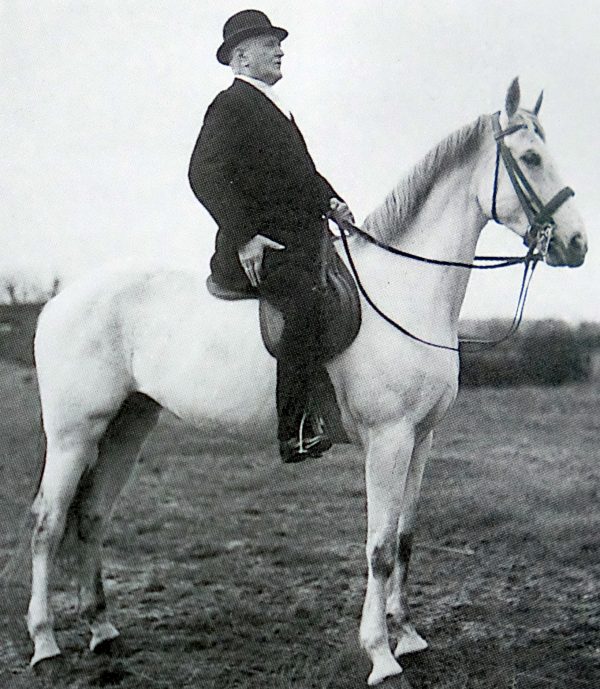 Heinrich Stecken, the father of Paul, was from 1926 to 1950, the director of the Westphalian Riding and Driving School in Münster.
Heinrich Stecken, the father of Paul, was from 1926 to 1950, the director of the Westphalian Riding and Driving School in Münster.
When Paul Stecken was born on June 16th 1916 it was highly probable that he would later have something to do with horses. His father was for 25 years head of the Westphalian Riding and Driving school. Paul and his brothers Albert and Fritz were instructed by their father.
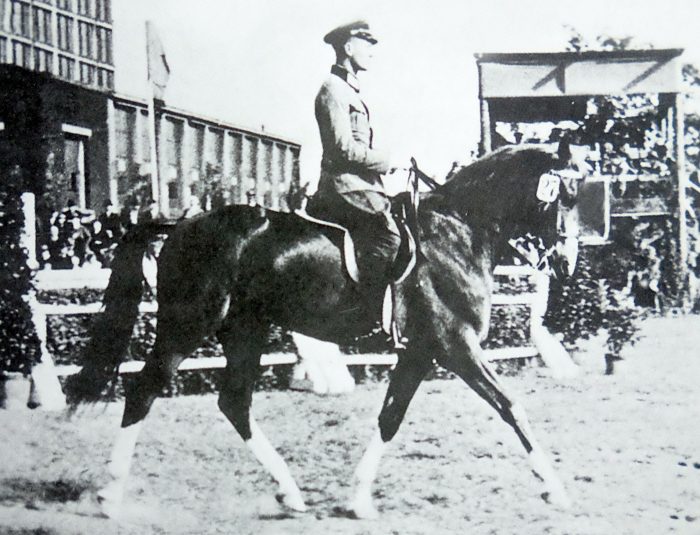
Paul Stecken with his dressage horse Obersteiger, perhaps in the end of the 30s
or beginning of the 40s.
At the age of 18 years Paul went into the army. He had the great luck to come to cavalry regiment Number 15 in the Westphalian small town Schloss Neuhaus. There he had great teachers like Edwin, Earl of Rothkirch in dressage, Olympic team gold medal winner Captain Lippert in eventing and Hermann Baron von Nagel in show jumping. This comprehensive schooling in all areas of horse sport disciplines was typical of the German education philosophy for riders and horses, which was based on the famous instruction book Heeresdienst-Vorschrift 12 (HDV 12) and was one of the secrets of success of German horse sport over a long time.
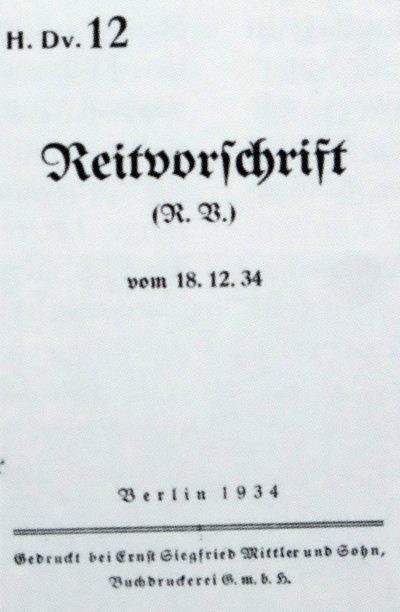
Later on Paul was ordered to the cavalry school in Berlin-Krampnitz. At this time he developed into one of the best dressage exponents of the German cavalry. In the Second World War Paul, Stecken was chief of a Cavalry squadron. 1943 he was promoted to the rank of a Major. During the war in Russia, he was heavily wounded, and that put a stop to his own riding career.
In 1950 he took over the task of the leading of the Westphalian Riding and Driving School from his father, which was at this time heavily damaged from bombing by air during the war. In the following years and decades Stecken developed the Westphalian Riding and Driving School to a school of international level. He earned great recognition for the education of trainers and judges. He also influenced the official German training book ‘The Principles of Riding’, which was based on the HDV 12. He was founder of the German association of professional trainers, and he was a member in several examination committees.
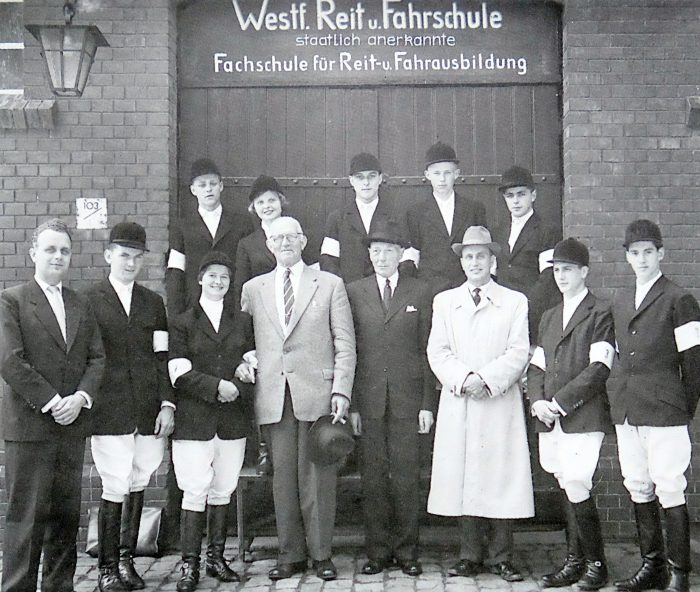
The first examination of professional riding instructors at the Westphalian Riding School in the year 1956. Stecken on the right side of the picture with the light coat and the grey hat.
After his retirement as director of the school in Münster he had great influence as a judge, as an instructor and with a lot of publications. From the end of the 20th century on, when the methods of Rollkur and Hyperflexion had more and more influence in the international dressage scene, he was one of the few experts with an international reputation who found very clear and harsh words against this kind of horse drilling.
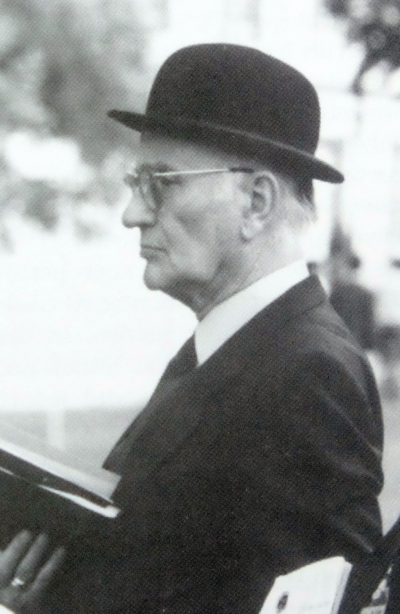
As a judge and an instructor for judges, Stecken influenced the German judge system.
Perhaps his most important citation in this time was very simple, but 100 percent right: ‘Riding in the right way is enough’ (Richtig reiten reicht). By the right way, he meant the way of the Principles of Riding.
In an interview with one of the most important and serious newspapers of Germany, the Frankfurter Allgemeine Zeitung, he made the following statement about the Rollkur and the impact of this method to the horse Totilas: “At the 2009 European Championships in dressage in Windsor, where Totilas’ star was born, it was possible to watch the Rollkur particularly closely. Totilas had been with an unnaturally short neck, and overworked, elaborate movements to see. One wonders how long does the horse endure this? This attitude was incompatible with the health and well-being of the horse. The attitude of the neck is compulsion, the back is not given, but tense. The movement is unnatural and cramped. The entire muscle development becomes firmer and stiffer every year.”
I had the great luck to meet Stecken sometimes and discuss different developments and problems in the horse sport with him. It was admirable to see that Stecken was, until his death in 2016, in his mind a brilliant man with a thinking of the highest level. As one reason of the temporary success of the Rollkur method, he identified the development in the horse breeding. The construction of the neck and the poll of modern sport horses made it much easier to use this method than in earlier times. At the climax of the Rollkur riding ,Stecken told me the following prophetical words: ‘In the history of riding we have seen sometimes wrong developments. But every wrong development came after several years an end when the people discovered the disadvantages and problems of wrong training and schooling the horses. So I am absolutely sure that Rollkur or Hyperflexion will have no future in the horse sport.’
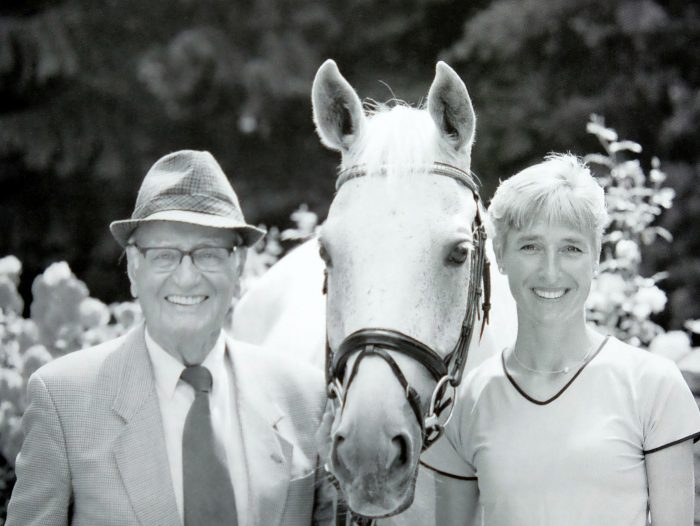
Up to the last month of his life, Paul Stecken was a mentor for Ingrid Klimke.
Once again Thomas many thanks for your help in this quest…
There’s just one more episode to come – watch this space!



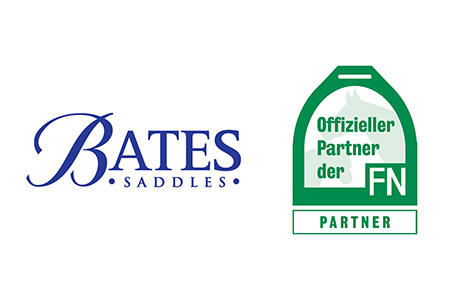
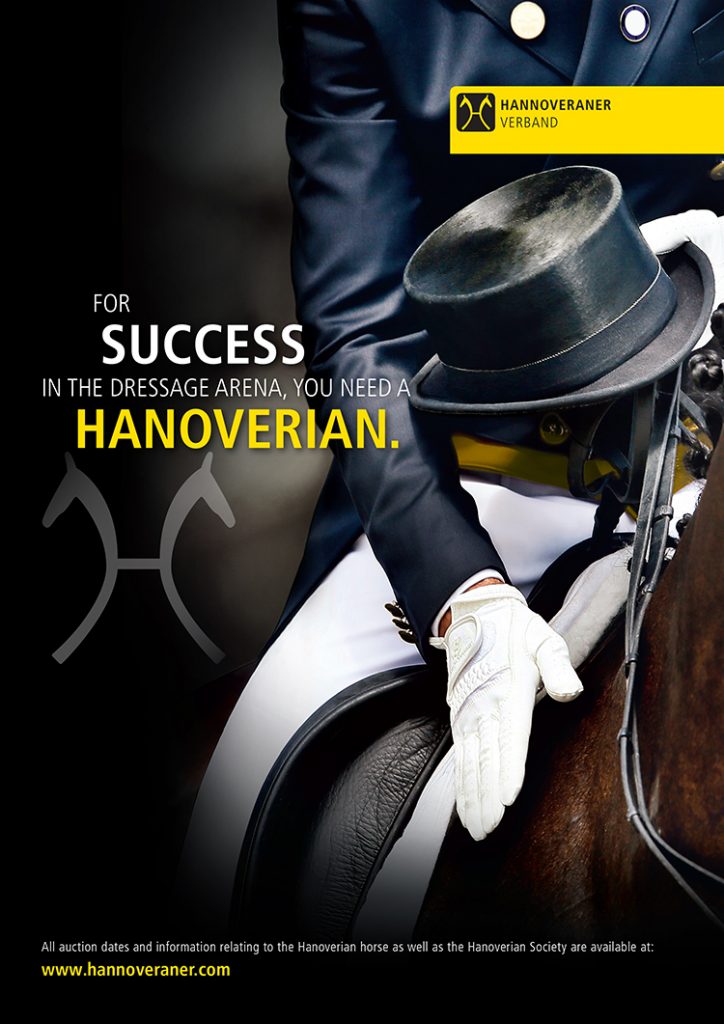

Sono sempre stato un estimatore della scuola tedesca classica ed ho anche studiato a fondo i suoi uomini illustri come GUSTAV STEINBRECHT ed ho analizzato a fondo il suo trattato : DAS GYMNASIUM DES PFERDES ed altri suoi predecessori. -RINGRAZIO-